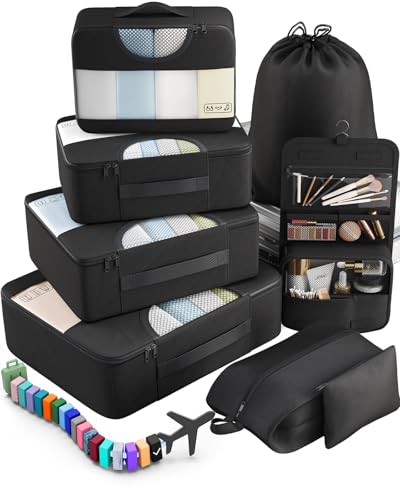In Punakha, they use Type C, D, and G power plugs and outlets. The voltage is 230V, and the frequency is 50Hz.
So, you’ll need a travel adapter in Punakha. Their plugs and outlets are different from the Type A and B ones we use back in the States.
Quick Overview of the Plugs in Punakha:
- Plug type in Punakha: C, D, and G
- Standard voltage: 230V
- Frequency: 50Hz
- Need a travel adapter? Yes, you do need a travel adapter
- Need a voltage converter? Don’t assume — check the power specs
- Recommended plug adapter: Vintar Universal Travel Adapter Kit
Our information is based on official power regulations from each destination, international IEC standards, and input from travelers who’ve experienced it firsthand.
The Only Travel Adapter You’ll Need in Punakha
Finding a travel adapter that actually works for Punakha can be tricky. We don’t sell them, but we’ve put in the hours to research voltage, outlet types, charging speed, and reliability. This one checks all the boxes:
Recommended Travel Plug Adapter
by 1,000+ travelers on Amazon
If you’re already traveling or at your destination without a power adapter, no worries—you’ll probably be able to find one nearby. Still, bringing one from home just saves you the extra step and gives you one less thing to think about.
Punakha is commonly paired with routes through Bangladesh, India, or Nepal. Check what type of adapter you’ll need.
Power Outlets in Punakha
In Punakha, they use Type C, D, and G power plugs and outlets.
Type C

Type C outlets have two round prongs and no grounding pin. Type E and F plugs usually fit too, but grounded plugs will need an adapter.
Type D

Type D outlets have three large round prongs in a triangular layout and typically only accept Type D plugs, although Type C plugs might fit loosely and are not recommended for safe use.
Type G

Type G outlets have three rectangular prongs in a triangular layout and built-in fuses. Other plug types won’t fit without an adapter.
Do You Need a Voltage Converter?
Before plugging in your electronics in Punakha, check the voltage. It’s different from the 120V used in the U.S., so you’ll likely need a converter.
Before plugging in your electronics abroad, always double-check the voltage label. If it says “100-240V, 50/60 Hz”, your device will work on both 120V and 220-240V power sources without a converter. This is common for tablets, laptops, cameras, and rechargeable toothbrushes.

Which Travel Devices May Need a Converter?
Looking for a solid voltage converter? These highly rated options are a good place to start.
| Device | Need Converter? | Notes |
|---|---|---|
| Phone | ❌ No (usually) | Most modern phone chargers are dual voltage (100–240V) |
| Laptop | ❌ No (usually) | Check the power brick label for 100–240V |
| Hairdryer | ✅ Yes (often) | High wattage; many models are not dual voltage |
| Electric toothbrush | ⚠️ Check voltage | Some models are 110V only |
| Camera / DSLR | ❌ No (usually) | Most chargers are dual voltage |
| Power bank | ❌ No | Charges via USB, adapter is enough |
| Electric shaver / trimmer | ⚠️ Check voltage | Older or cheaper models may not support 230V |
| Tablet / iPad | ❌ No | All models are dual voltage |
| Portable fan | ✅ Yes (sometimes) | Many models are not compatible with 230V |
| Game console | ⚠️ Check voltage | Newer consoles like PS5 and Xbox are often dual voltage — check to be sure |
| Bluetooth speaker | ❌ No (usually) | Charges via USB |
| E-reader (Kindle, etc.) | ❌ No | USB charging only, no converter needed |
Top Travel Essentials to Pack
Once you’ve got power covered, these are the extras that help everything else run smoother. Think of them as your travel sidekicks.
Digital Luggage Scale
Packing Cubes
Power Bank
More About Punakha
Punakha was once Bhutan’s capital, and you can feel that old power the moment you cross the river and see the massive dzong rising like something out of a movie. It’s built right at the junction of two rivers, and during spring, the surrounding trees bloom with purple flowers that make the whole scene look unreal. The royal family still uses it for big ceremonies, and it’s easy to see why—it’s absolutely stunning.
Unlike colder parts of Bhutan, Punakha has a warmer climate, so you’ll see rice paddies, banana trees, and even chili peppers growing along the roadside. There’s also one of the longest suspension bridges in the country, swaying gently over the river with prayer flags whipping in the wind. It’s the kind of place where you can be completely alone with your thoughts and still feel connected to something bigger.
Not far from town is Chimi Lhakhang, the famous fertility temple built by a monk known for being a bit wild—and let’s just say, you’ll see more than a few playful phallic symbols painted on walls. But underneath the humor is a deep respect for nature, life, and blessings. Punakha blends beauty and belief like nowhere else.
Punakha uses the same plugs and outlets as the rest of Bhutan.




